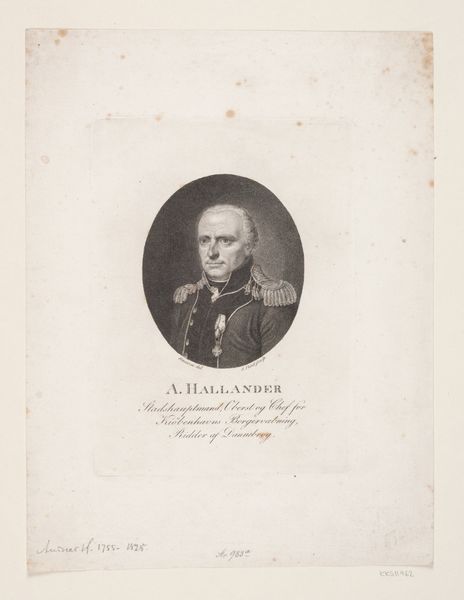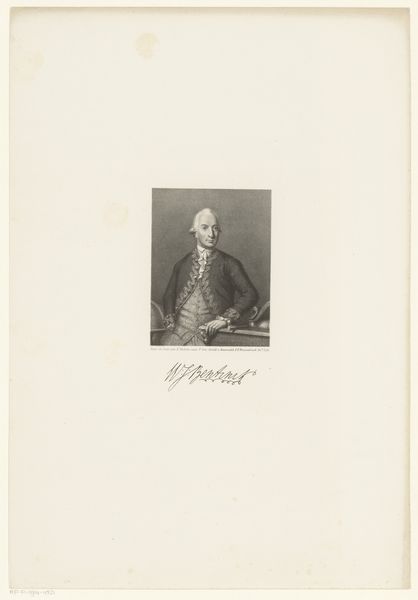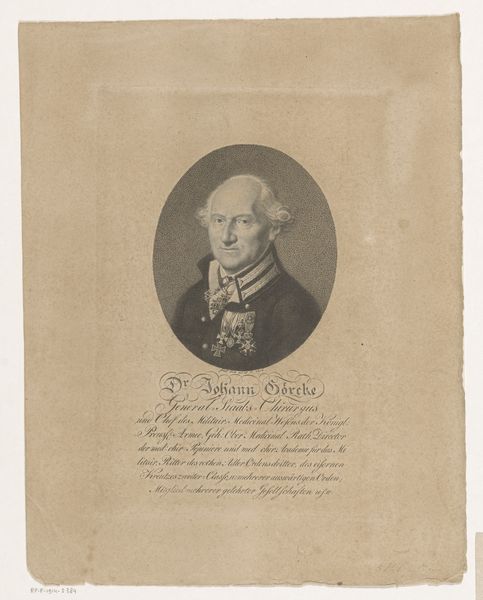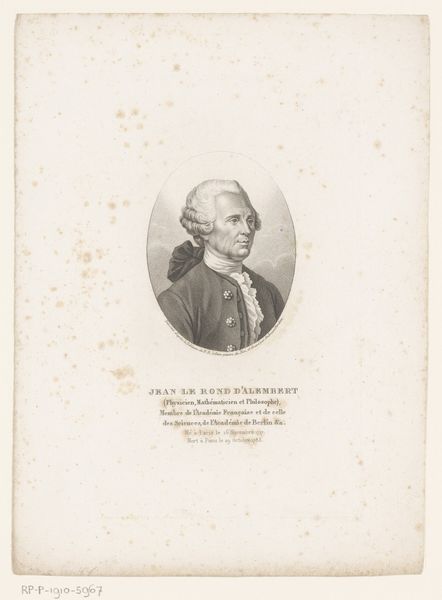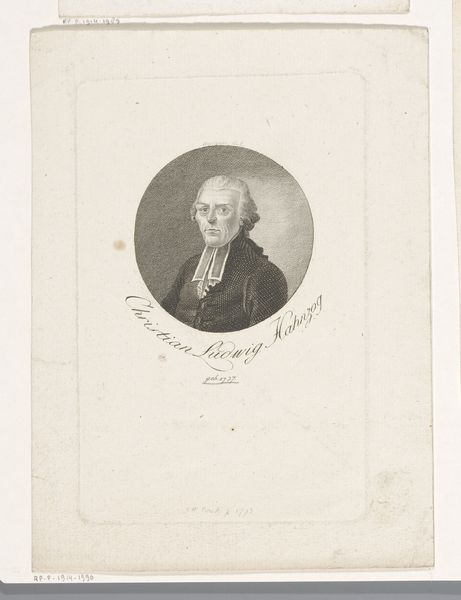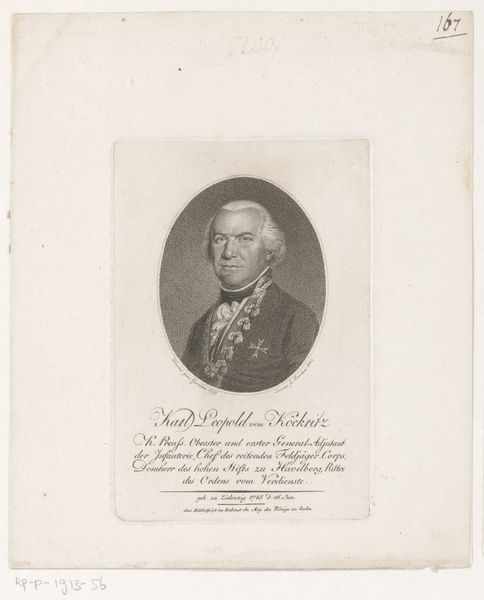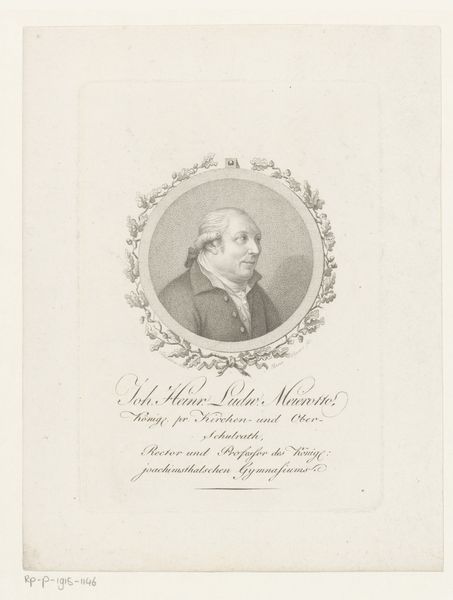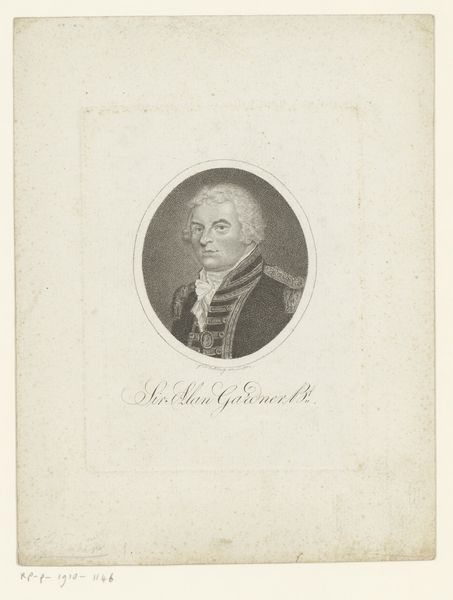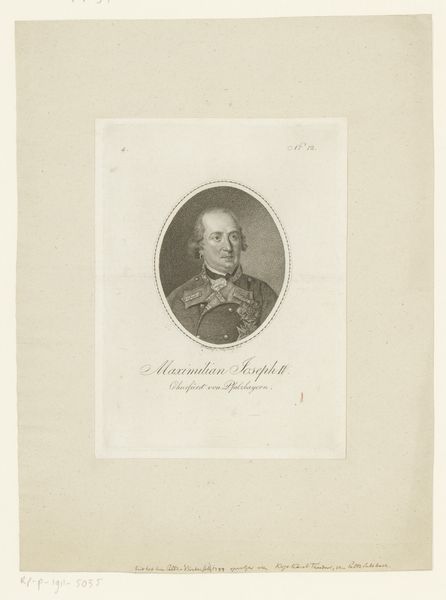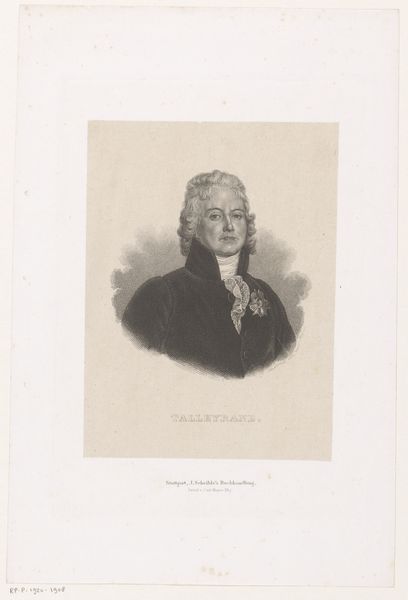
engraving
#
portrait
#
neoclacissism
#
old engraving style
#
history-painting
#
academic-art
#
engraving
Dimensions: height 169 mm, width 122 mm
Copyright: Rijks Museum: Open Domain
Curator: Here we have a piece entitled "Portret Magnus Gottfried Lichtwer." It is an engraving made sometime between 1783 and 1850 and is held at the Rijksmuseum. Editor: This portrait presents a rather reserved and dignified figure, encased in an octagonal border that adds a sense of formality. The fine lines of the engraving create a captivating level of detail. What strikes you about this work? Curator: Note how the engraver has used line weight and density to suggest volume and texture. Look closely at the rendering of the face, the controlled gradation of tone which brings forward some features while placing others into shadow. It is interesting, isn't it, how the figure occupies almost all the space in the defined, dark border? What does that spatial decision imply to you? Editor: That the figure is perhaps trapped, as if in amber? It feels like all available space has been deliberately filled. Does the style, and the octagonal framing device, align this work with Neoclassicism? Curator: Precisely. We see the classical interest in order and clarity in the crisp lines and the idealized depiction of the sitter, but also consider how this piece employs form and structure. Can you discern the relationship between form and content? The clarity of line mimics, in many ways, the clarity of thought prized during this era. Editor: I see now. It's all about control, in both the visual language and perhaps the subject's persona. Curator: Indeed. The medium reinforces the message. Editor: Thanks, I would never have looked so closely at that medium and what the sharp details convey about a message of control.
Comments
No comments
Be the first to comment and join the conversation on the ultimate creative platform.
